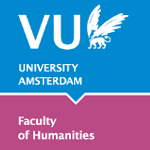
|
Digital Humanities Workbench |
Home page > Digital humanities > DH at VU University Digital Humanities at VU UniversityVU University participates in eHumanities.nl, a national platform that brings together expertise and research in the development and use of digital technologies in the humanities and the social sciences in The Netherlands. The eHumanities website contains a page offering an overview of DH at the VU.
Centres The Computational Lexicology & Terminology Lab of the Faculty of Humanities focuses on modeling understanding of natural language through computers with a central role for knowledge sources such as lexicons, ontologies and terminology. Their application perspective is text mining: technology that is used to automatically extract knowledge and information from text.
The Computational Lexicology & Terminology Lab of the Faculty of Humanities focuses on modeling understanding of natural language through computers with a central role for knowledge sources such as lexicons, ontologies and terminology. Their application perspective is text mining: technology that is used to automatically extract knowledge and information from text.
VU University Library aims at providing researchers with content for Digital Humanities that is as sustainable, varied and accessible as possible and provides assistance in three areas: data, infrastructure and information services and advice. PeopleStaff members of the Faculty of HumanitiesA (growing) number of staff members of the Faculty of Humanities is involved in digital humanities or computational research. The following specific Google search shows the staff members who mention this on their personal web page on the faculty web site. Staff members of VU University who are involved with CLARIAHCLARIAH "is developing a digital infrastructure that brings together large collections of data and software from different humanities disciplines". The following specific Google search shows the VU researchers that are involved in CLARIAH.
Academia.eduMany researchers maintain a profile page on Academia.edu, on which they present their publications and research interests. The following specific Google search (for digital humanities, digital history, computational linguistics or text mining) shows which researchers are or were connected to VU University: academia.eduProjectsThe Computational Lexicology & Terminology Lab of the Faculty of Humanities (see above) is involved in many digital humanities projects, either as project leader, coordinator or participant. These projects are described under Projects at CLTL's website. An exemplary selection of major projects in which the Faculty of Humanities participates is described briefly below.
VU Amsterdam Metaphor Corpus The goal of the BiographyNet project is to create a semantic knowledge base by extracting links between people, historic events, places and time periods from a variety of Dutch biographical dictionaries.
NewsReader
Verrijkt Koninkrijk (Enriched Kingdom)
Mapping the Via Appia |
Other topics in this section: Introduction Initiatives Tutorials Further information |

 The
The 